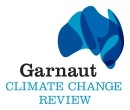 Forty leading Australian scientists have issued an urgent call for action on climate change. Drafted by Barrie Pittock and Andrew Glickson, the statement says that there is a “window of opportunity to halt a climate crisis”, if Australia begins:
Forty leading Australian scientists have issued an urgent call for action on climate change. Drafted by Barrie Pittock and Andrew Glickson, the statement says that there is a “window of opportunity to halt a climate crisis”, if Australia begins:
Urgently cutting carbon emissions.
Seizing the opportunity to fast-track utilisation of established and new clean energy technologies thus creating new business opportunities.
An urgent tree-planting campaign in Australia and its neighbors.
Attempts at CO2 capture through soil-carbon enrichment and preservation.
The statement has a list of nine suggested policies, including committing (and urging others to commit to) a peak greenhouse gas level of 450 ppm CO2e. Barry Brook at Brave New Climate, one of the signatories, suggests we may need to go further:
We need CO2-e to be 300-325 ppm, and >100% emissions reductions (with active geo-bio-sequestration) as soon as possible. Nothing less is going to pull out out of the sticky mire into which we are now rapidly sinking.
It would be useful if our science community could issue an equivalent statement in the run up to the election, to provide voters with guidance on what can and should be done here – and a yardstick against which to measure policy proposals (or the lack of them). Consider it the scientific equivalent of Treasury’s opening of the national books…

 The final version of the
The final version of the 

